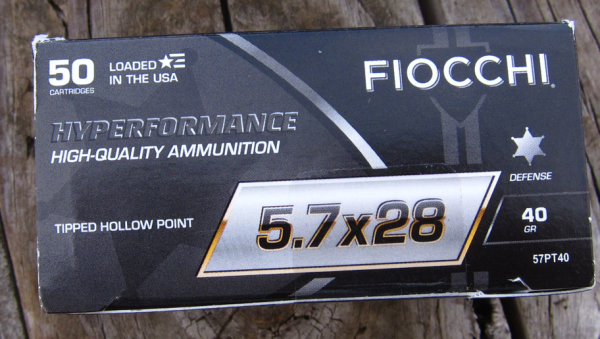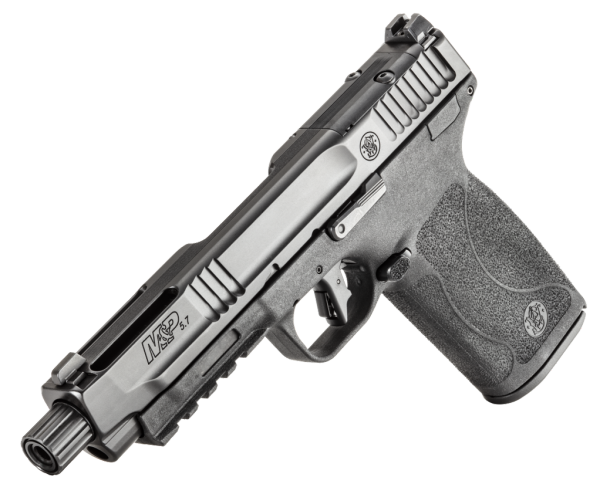A part of the new products aspect of SHOT Show includes new ammo announcements. With the addition of guns from Ruger and Palmetto State Armory in 5.7x28mm, Federal took up the challenge and we’ve seen American Eagle FMJ. Now, in 2023, Fiocchi has opened with a pair of Hyperformance loads for the 5.7 guns.


One is the Hyperformance jacketed frangible cartridge (#57JF35). Featuring a 35-grain copper core and copper jacketed projectile, the round has a polymer tip to ensure reliable function. Designed to bring rapid expansion and minimize the chance for perforation, this is a lead-free load.
The other load is the Hyperformance tipped hollow point (#57PT40). Featuring a 40-grain projectile, it is to provide deeper penetration.


Shooting samples of the 35gr frangible from the Ruger LCC (the only 5.7 I have available), I found the load hit 3” low at 25 yards. As I had the carbine roughly zeroed at 50 yards, I didn’t find this surprising. Five rounds crowded into a sub-2” cluster – which is an elderly shooter using iron sights more than an ammo or carbine issue.
The Ruger LCC has a nominal barrel length of 16 ¼”. Velocities from rifles shooting the 22 Magnum cartridge are often listed at 24”. Looking around the internet, I sought to compare velocity ranges between the 5.7x28 and 22 Magnum when fired from carbine length barrels. I found that the 40 grain 22 Magnum from a 16” barrel runs from around 1800 fps to just under 2000 fps. Lighter bullets, 30 grains, seemed to yield right at or just under 2300 fps in the 16” barrel tested.
The velocity from the Hyperformance jacketed frangible cartridge averaged around 2,311 from this rifle in 31° weather with considerable humidity. The load functioned well in the LCC.
The 40gr. tipped hollow point load hit about 2 ½” low at 25 yards, centered, in a 1.5” group. It’d be interesting to shoot this one with an optic over the same platform at fifty yards. The velocity surprisingly averaged 2,317 fps – marginally faster than the lighter bullet and significantly faster than 22 Mag.
The cries have already been raised by the cool kids on the internet: “Why the 5.7?”

Why not? Unlike defense loads for 20 gauge, the 5.7x28mm ammo arrived after the guns did. And the guns still are: as of this NSSF SHOT Show, another 5.7 appears, the Smith & Wesson M&P5.7 – a gun that took some considerable redesign and engineering that feeds into the way the 5.7 round works, to ensure consistent cycle of operation.
Innovation is good.
At the outset of the 5.7 project many years ago, I was concerned for its success. It was a niche offering with a single provider of ammo and guns. That’s not true now and that lets us examine the cartridge in light of its potential as a farm and field gun, as a teaching gun for new shooters, as well as a defense possibility for armed citizens with disabilities.
-- Rich Grassi